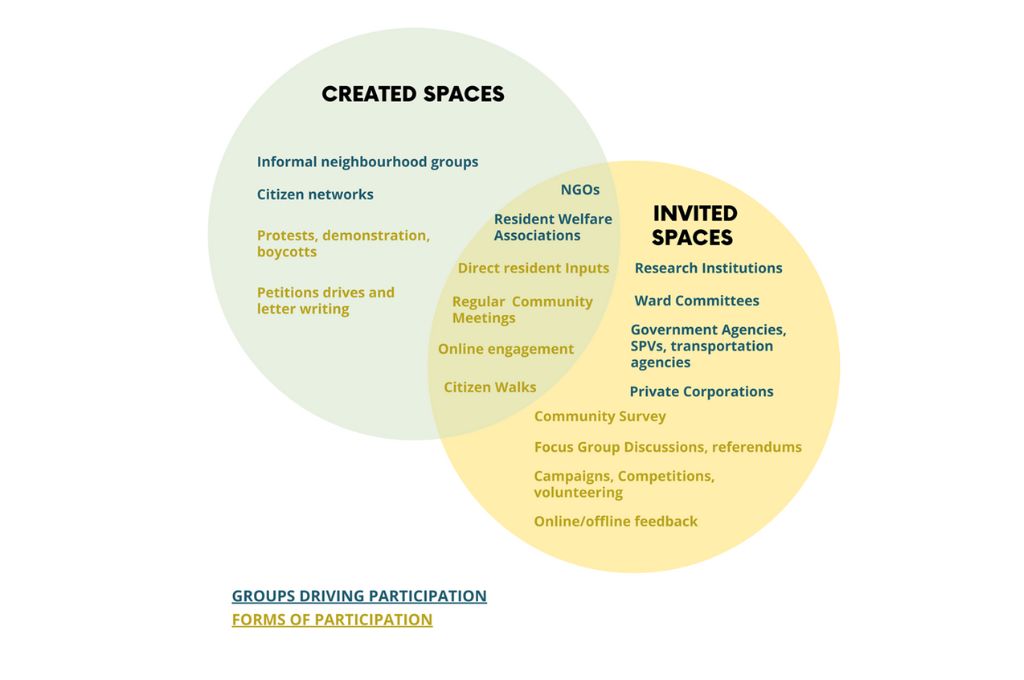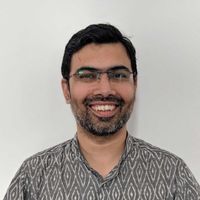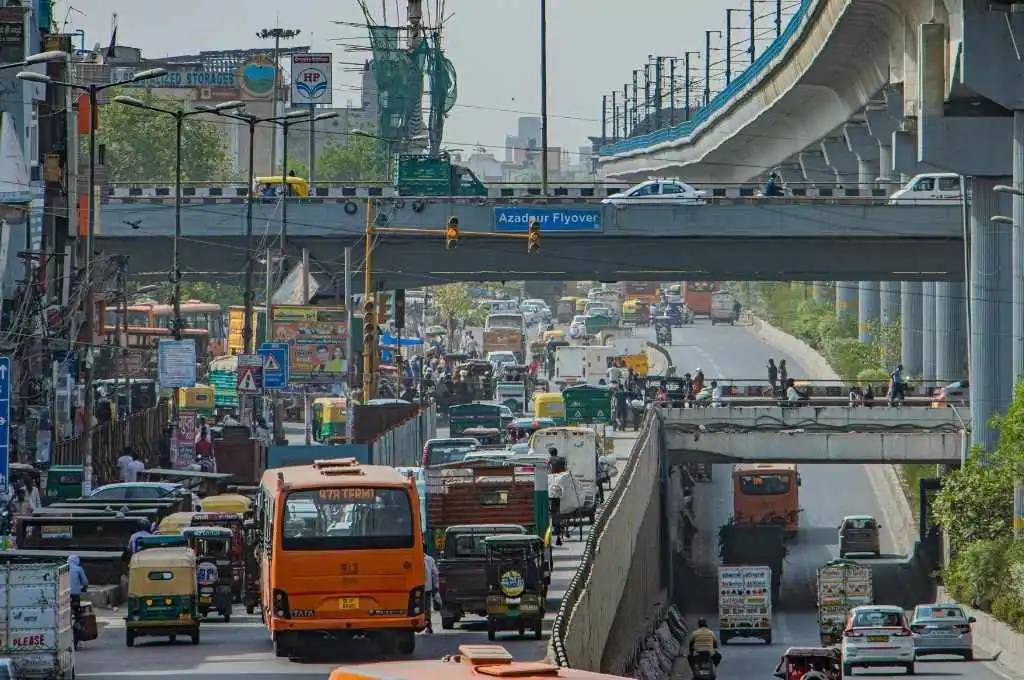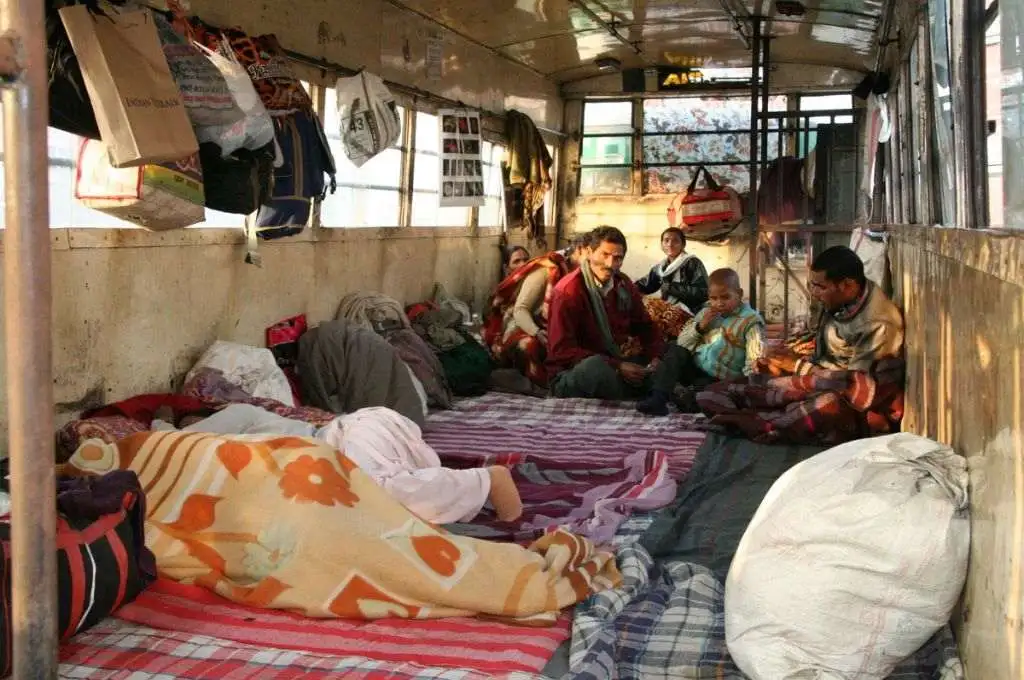India’s cities are growing at a rapid pace. However, due to a lack of resources and technical knowledge within governance systems, decisions for cities are often made by people who do not live in them. This is even more pronounced in smaller cities, where decision-making is rarely shared with the residents and information about projects is often communicated after the decision to implement them has already been made. If we want cities to grow sustainably and meet the needs of their local residents, it is important to bring in local citizen voices into decision-making.
In Nagrika’s research over the past few years we have often asked the question: Where are the citizens’ voices? More often than not, we’ve found that the role of citizens in city affairs is not institutionalised and is systemically missing. More recently, we’ve focused on understanding where and how urban citizens can provide inputs to influence the world around them and how they are represented at various levels of government. We synthesise some of our key findings in this article.
Why do citizens need to engage in urban governance?
According to the World Bank, citizen engagement is a “two-way interaction between citizens and governments or the private sector that gives citizens a stake in decision-making, with the objective of improving development outcomes”. While there is no constitutional definition of citizen engagement, India’s structure as a representative democracy includes the participation and engagement of citizens in its governance by default.

Citizen engagement is particularly critical in urban settings because of the sheer diversity and density of cities. The benefits of an engaged urban citizenry are multifold:
- It can play a crucial role in identifying urban challenges as well as in providing perspectives that can help design better solutions.
- Engaging citizens can also help municipal authorities better understand the needs of communities, resulting in more inclusive programmes.
- Being part of the governance process creates a sense of agency, ownership, and belonging among citizens that affects how they engage within their communities.
India’s urban development programmes post Independence were initially largely top-down and did not have much space for citizens. In 1992, the 74th Constitutional Amendment Act created room for citizen engagement in urban governance through ward committees. A ward committee is a body comprising an elected representative along with citizens where ward-level plans and projects can be worked on collaboratively. However, it was only in 2005, through the Jawaharlal Nehru National Urban Renewal Mission (JNNURM) that these provisions were operationalised. The city development plans prepared under JNNURM required citizen participation in the form of public consultations. These efforts, however, were met with limited success. More recently, initiatives such as the Smart Cities Mission and the Swachh Bharat Mission have extensively focused—at least in policy guidelines—on engaging citizens when designing programmes for their cities.
How do citizens participate in decision-making?
On taking a closer look at spaces that engage citizens, we find two types: invited and created. The former refers to when authorities or institutions decide to ‘invite’ public views or participation in some form. Various non-governmental organisations and citizen groups try to make the most of these invited spaces and, at the same time, ‘create’ their own spaces—usually to solve self-defined problems. One example of this is when the citizens in Mysuru came together to protest against a ropeway project that was leading to the felling of trees.

While both invited spaces and created spaces have always existed, they have been evolving in recent times.
The changing nature of invited spaces
1. Representation of smaller cities
Representation of smaller cities has increased in the newer urban programmes. Almost 45 percent of the cities under the Smart Cities Mission have a population of less than 5 lakh—this number was around 25 percent for JNNURM.
We are also seeing the demand for ward committees growing in Tier-II cities. Through citizen-led efforts, Mangaluru has been able to get ward committees elected for all its wards. Similarly, there are efforts and demands in cities such as Hubbali and Coimbatore to provide representation through ward committees.
Additionally, as spaces for citizen engagement get digitised, small- and medium-sized cities have been more successful than metro cities in engaging people owing to greater ‘civic intimacy’ between citizens and their cities. Small towns and cities possess many of the essential components needed for stakeholder-led governance—stronger social ties, frequent interactions, and social norms that are centred around civic participation. Small cities also tend to have a better representative-to-citizen ratio, which enables better communication between the two parties.
2. Informal to formal
The inclusion of ward committees in the 74th Constitution Amendment Act was an attempt to formalise citizen participation in urban governance. Despite this, for years, engagement has continued to be informal and ward committees have not been created mainly due to disinterest on the part of governing agencies.
More recently, while a few cities are focusing on revitalising ward committees, newer urban programmes are also creating formal spaces of engagement. For example, as per the Swachh Survekshan toolkit, a key criteria for the city’s ranking depends on inputs taken directly from the citizens. Based on this mandated institutional provision, the 2022 Swachh Survekshan gathered citizen feedback from approximately 1.14 crore citizens from 4,355 cities.
3. Offline to online
Historically, citizen engagement was undertaken through traditional in-person means such as surveys, focus group discussions, and interviews. Over the past decade, this has slowly evolved into using technology to enable citizen participation. National, state, and city government departments as well as private bodies have been using information and communication technologies to design large platforms for encouraging citizens to ‘discuss and do’.
These newer technologies are enabling dialogue between governments and citizens through open discussion forums, creative competitions, polls, and surveys. At the national level, the Government of India has created MyGov.in, a platform for citizen engagement. Alongside this, many cities have been using technology to involve citizens in decision-making too. For instance, when finalising the designs of an entertainment and commercial project for the city, the Vijayawada Municipal Corporation launched a website and created social media accounts to gather public opinion.
4. Passive to active
Traditionally, communities have passively provided feedback on issues, and only when asked. In recent years, a growing focus on public participation has seen a shift from passive feedback to active engagement and consultation. In these consultations, citizens are often engaged early on to provide their inputs at the initial design stage of the programme.
For example, through the Streets for People Challenge, more than 1,800 design professionals, students, and other organisations came together to develop and test creative solutions to reclaim streets for the general public. The challenge received inputs from more than 60,000 citizens through surveys, and over 600 civil society organisations extended their support to cities.
Similarly, Church Street in Bengaluru was temporarily pedestrianised in an initiative led by the Directorate of Urban Land Transport that involved local residents, businesses, start-ups, and the Department of Tribal Welfare. The authorities conducted a public consultation, facilitated permits to let businesses use streets, allowed participation of start-ups, and curated cultural events in accordance with COVID-19 protocols.
The evolution of created spaces
1. Traditional media to social media
Traditional media such as newspapers or signature campaigns are some of the oldest platforms used by citizens to communicate with their governments. Citizens and civil society have used such campaigns to ask for fare reduction in bus services or demand the extension of transport services. Neighbourhood groups such as resident welfare associations have convened meetings and raised issues through media to voice their demands and concerns such as increased traffic.
Social media is steadily becoming a key space created by citizens to appeal for services from their government departments. This has forced even city governments to be active on it to communicate with citizens. For example, citizens have used Twitter campaigns to raise grievances while commuting, memes to point out flaws in government projects, and social media campaigns to raise awareness about greener mobility modes. Citizen groups are also coordinating activities such as heritage walks through social media and at the same time using it as an informational bridge between the government and the citizens.
2. Reclaiming public spaces
Over the last decade we have also seen the rise of placemaking—a process where citizens or voluntary organisations attempt to claim public spaces while drawing attention to important issues faced by citizens. One of the early examples of this is Raahgiri Day, an open-street initiative to restrict automobile use on the streets of Gurgaon and to turn them into recreational spaces for the public. More such efforts have been under way in various cities, where they are led by media groups and nonprofits, among others.
3. Litigation and protests
Although less common, citizens also use litigations and petitions as bottom-up approaches to influence urban governance. In 2006, a coalition of resident welfare associations in Delhi went to court to defend their neighbourhoods against what was seen as degrading informalisation, which led to the infamous Delhi Sealing Drive. Recently, the steel flyover project in Bengaluru was cancelled due to protests by citizens.
What steps can be taken to increase citizen participation?
1. Bridging the gap between created and invited spaces
Both created and invited spaces provide an opportunity for citizens to voice their opinions in decision-making, and a convergence between the two seems to be the logical way forward. The CITIIS project, for example, has included a ‘stakeholder engagement plan’ in the design project schedules, which also requires identification and meeting with relevant stakeholders. Similarly, citizens and citizen-centric organisations need to be constantly aware of the points of entry that exist and that can be created to make their voices heard.
2. Engagement at more stages
Though overall levels of engagement have increased, we’ve observed that citizen consultations are mostly limited to the beginning of a programme and are not continued through the project life cycle. There were few to no examples of governments engaging citizens once a policy or programme is implemented to get their feedback on its utility or challenges.
3. Looking beyond the 74th Amendment Act
Even after 25 years of the passage of the 74th Amendment Act, its aim remains unfulfilled as most states have not been able to institutionalise citizen engagement through ward committees. One new approach is making funding for certain projects conditional on engaging citizens in the process. CITIIS projects, for example, mandate a one-year maturation period which requires stakeholder engagement and feedback during conceptualisation, even before a project design can be tendered.
India’s cities are diverse, and citizens living in these cities have equally diverse needs. Making citizens a part of the governance process can help ensure that our cities grow sustainably.
Pranjal Kulkarni and Oishika Basak provided research support on this article.
—
Know more
- Watch Talk in the Town, a series profiling city-based changemakers who are bridging the gap between citizens and governments and thus ‘creating’ spaces for engagement.
- Read this article on making urban planning work for smaller cities.
- Watch Small City Dreaming, a documentary film about the working lives of young people in small cities in India and Indonesia.
Do more
- Identify the ward councillor from your ward and approach them for raising local issues.
- Add more local knowledge about your city on Wikipedia to expand its reach to citizens. Learn more about this initiative here and write to the authors at info@nagrika.org in case of questions.
- Use the MyGov platform to identify areas where you as a citizen can contribute, such as providing comments on policies and taking polls.






